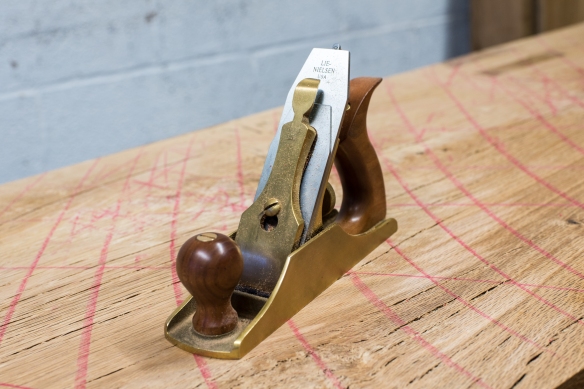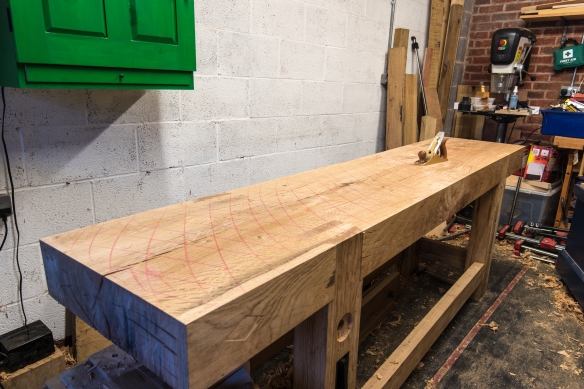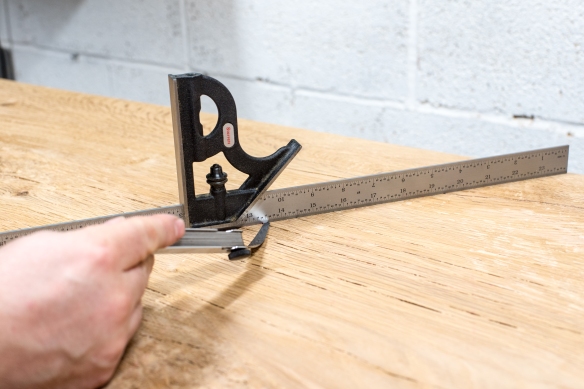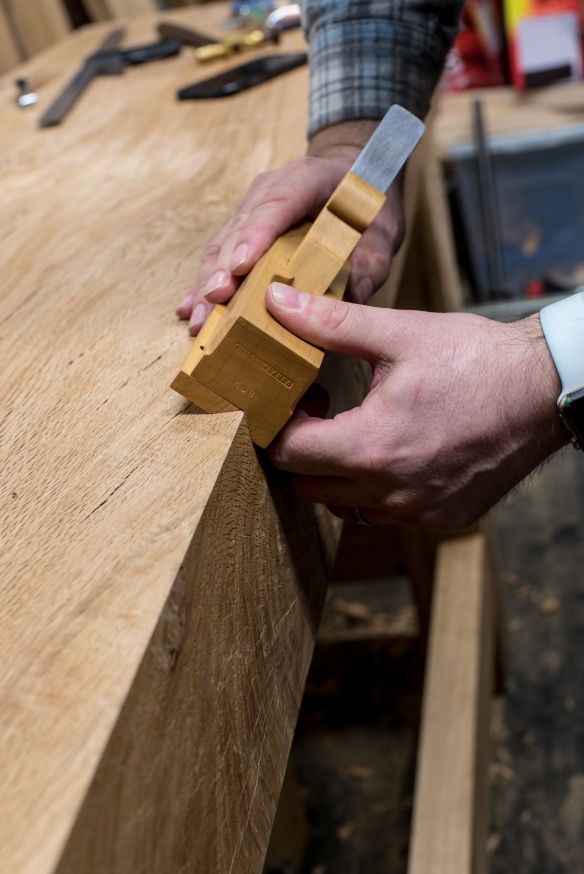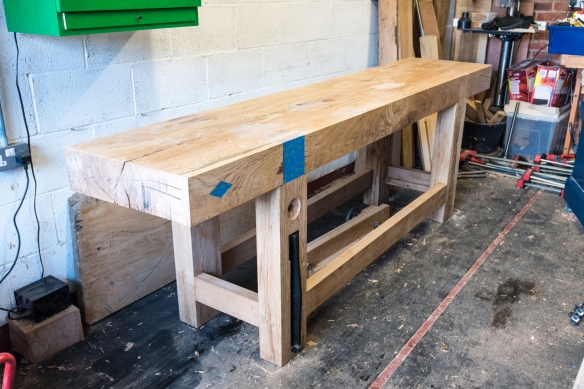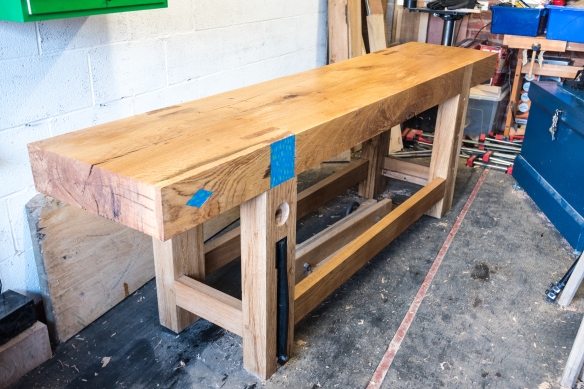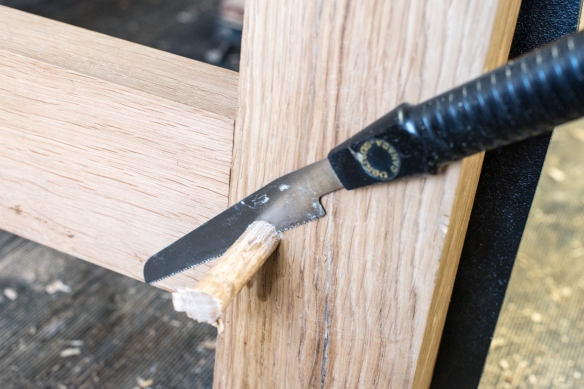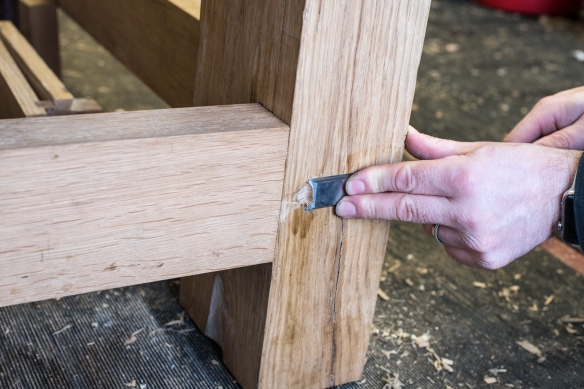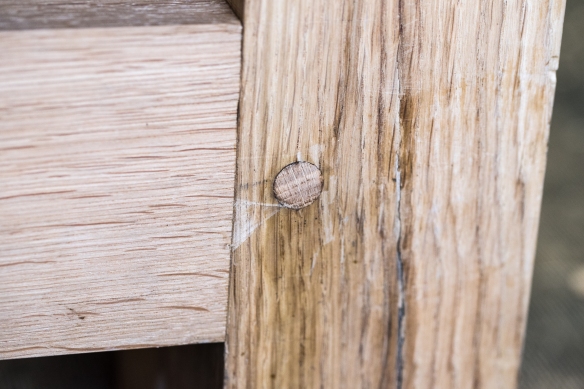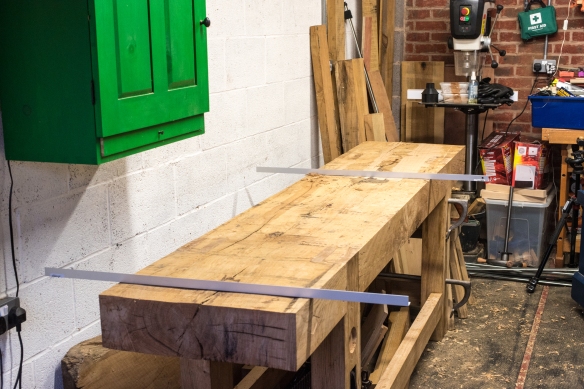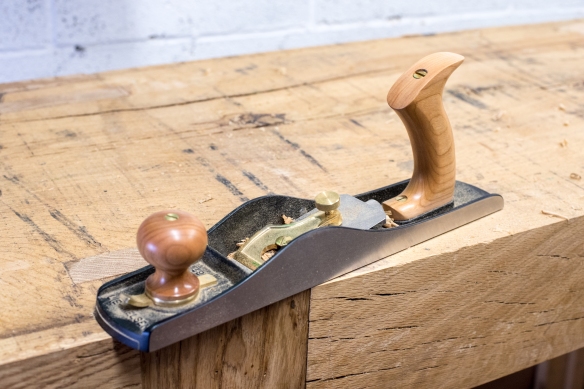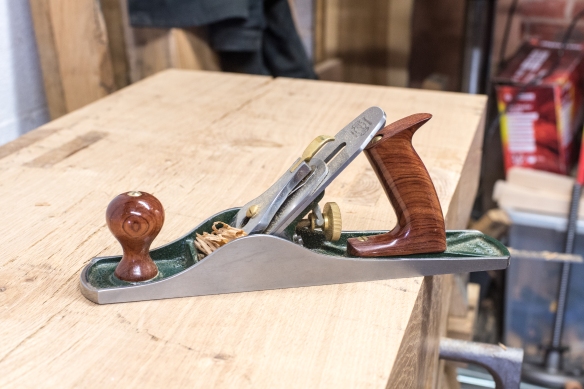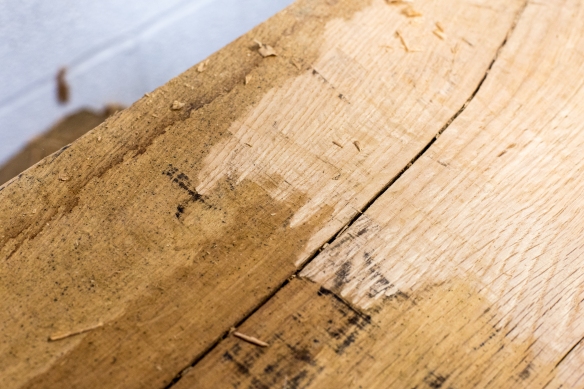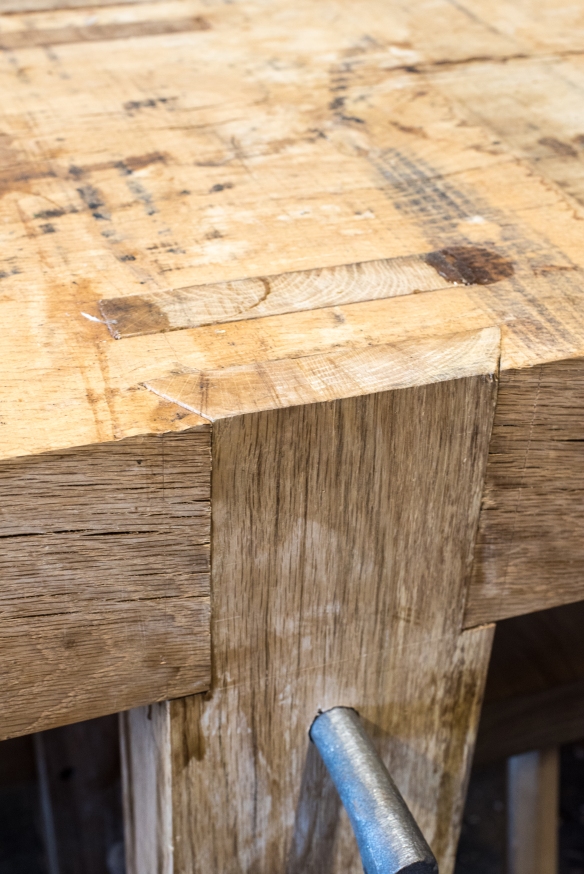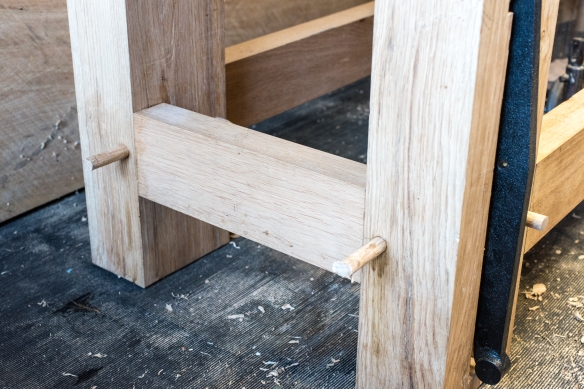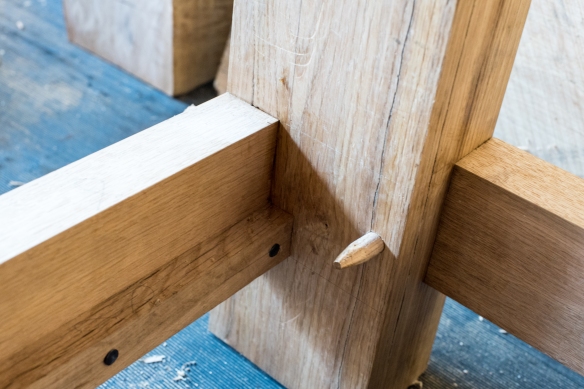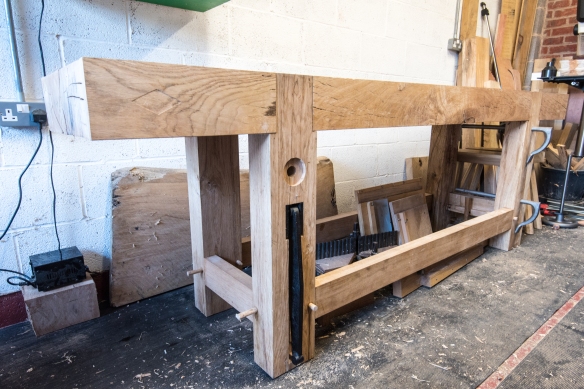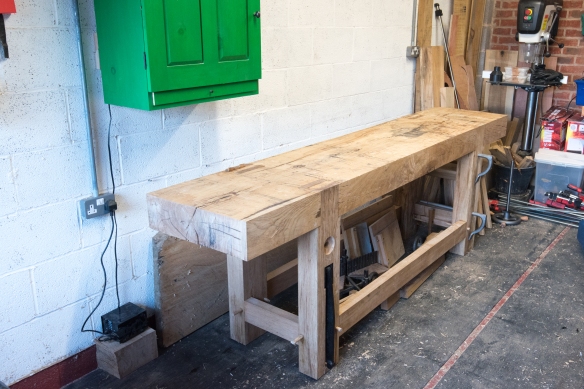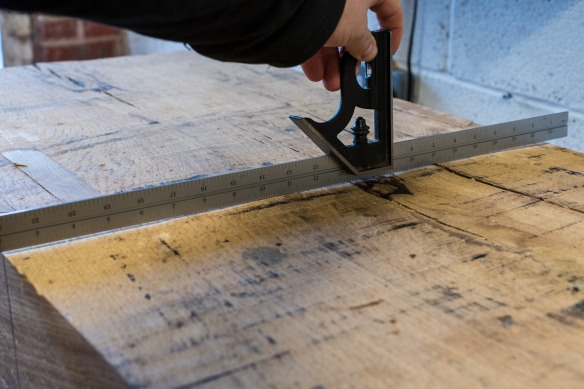
This is how the front end of the benchtop looked before traversing with the jack plane
I’m going to be honest with you, dear reader. Flattening the bench top has been the single most challenging aspect of the Roubo build. Not the large-scale joinery (which is where I expected the challenge to come), but getting the bench top flat and true. Why is that? I flatten every component of every build. And while that may be true, at 102″ x 21″ the bench top is the single largest surface area I’ve tackled, and the only project which has truly dwarfed my big No8 jointer plane. That being said, with perseverance and trusting fundamental handwork techniques, even a large surface area like this can be tamed.
At the end of my last blog post the back half of the slab had been traversed flat across the width. Since then I have traversed the front half, and then did some measuring with the straight edge to build up an understanding of the topography of the slab. A couple of truculent knots, and some pronounced cupping, meant that the slab had quite a lot of variation before being traversed. There was also a stubborn low patch along the rear edge, between the two legs.

Traversed, but with some stubborn low patches remaining. These will come out as the benchtop is flattened
After traversing, the next step is to work down the length on a 45 degree skew, working in one direction and then the other. The basic premise is that each process removes the variations of the one before, finishing with jointing along the length. I started working on the skew, and found myself chasing my tail, introducing a fall-off on the far edge where it had previously been flat, and generally making no progress. That’s ok – it’s wood and it hates you, and sometimes things don’t go quite to plan. My preferred solution in such circumstances is to take a break, preferably for a day or so, and return to the task fresh. I also took the opportunity to correspond with Mark Hicks, who kindly gave me some helpful pointers on how to tackle flattening such a monstrous piece of oak.
My first step when returning to the workshop was to sharpen my No5 and No8 planes, and to undertake a hard reset of the slab by traversing it flat again. This didn’t remove too much material, but did give me a solid reference surface from which to work. One of the interesting questions with flattening benchtops is “how flat is flat?“. You can work until you’re getting full width shavings off the plane, but after my recent frustrations I decided to be a bit more scientific about the process. So, I dug out my feeler gauges and traversed the bench until the entire top was flat to 0.005″ over a 24” length. I found that marking the high spots with a red lumber crayon helped to identify the key areas to work.
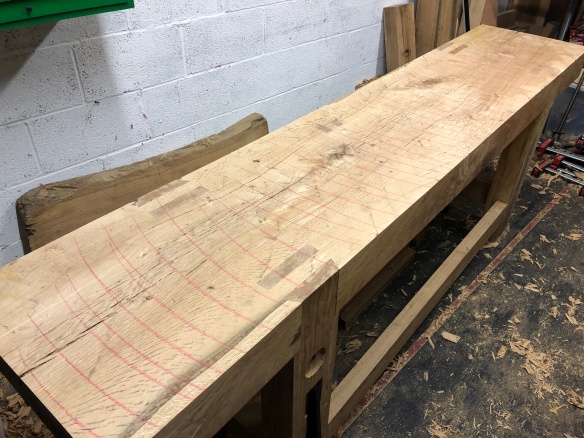
Working the benchtop on a 45 degree angle removes variations from traversing. Shading the benchtop with lumber crayon helps to identify when the whole surface has been worked.
Once the benchtop was traversed flat, I went back to working at a 45 degree angle with the jointer. This can be an awkward stroke as the plane ends up being extended far in front of you, which for the heavy No8 can introduce a nose-dive, rounding over the far edge of the workpiece. Paying attention to body mechanics, and being careful to end the stroke with pressure applied to the heel of the plane, is essential. I also measured the bench top every few inches with my straight edge and feeler gauge, marking off the high spots to ensure that the plane was removing material where it needed to. After six passes down the length of the bench top in each direction, the surface was flat to 0.005″ over 24″ on both the diagonal and across the width. Which seemed like a very good place to stop for the day. The length is a bit lumpy, but not more than 0.008″ on 24″ for the majority of the surface, and jointing will remove that in relatively short order.
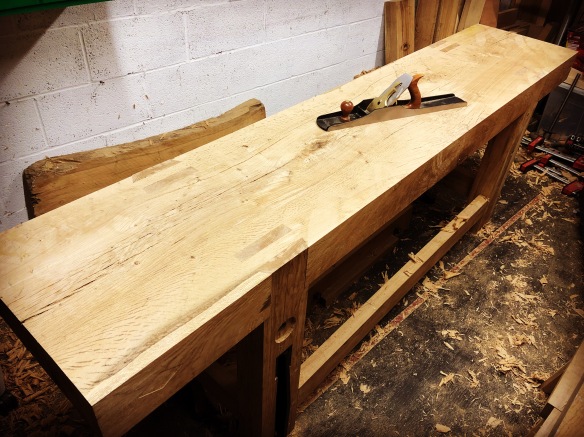
Flat across the width and on the diagonal. Only jointing the length to go now
Flattening the benchtop has been humbling for sure, but moving through those difficulties and getting it to a state where is pretty much finished is very gratifying.





